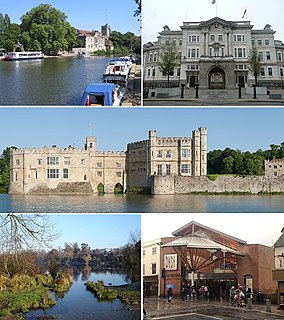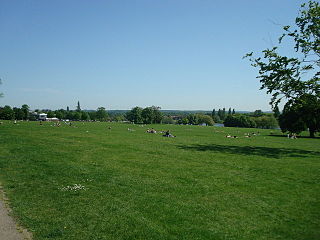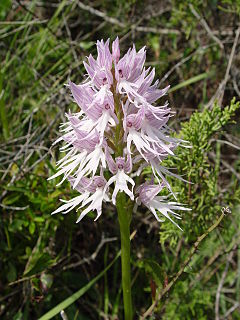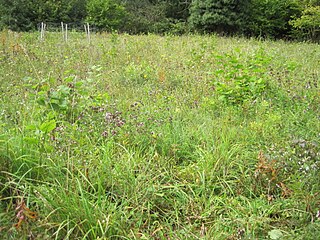Related Research Articles

Sandwich is a historic town and civil parish in the Dover District of Kent, south-east England. It lies on the River Stour and has a population of 4,985. Sandwich was one of the Cinque Ports and still has many original medieval buildings, including several listed public houses and gates in the old town walls, churches, almshouses and the White Mill. While once a major port, it is now two miles from the sea due to the disappearance of the Wantsum Channel. Its historic centre has been preserved. Sandwich Bay is home to nature reserves and two world-class golf courses, Royal St George's and Prince's. The town is also home to many educational and cultural events. Sandwich also gave its name to the food by way of John Montagu, 4th Earl of Sandwich, and the word sandwich is now found in several languages.

Maidstone is the largest town in Kent, England, of which it is the county town. Maidstone is historically important and lies 32 miles (51 km) east-south-east of London. The River Medway runs through the centre of the town, linking it with Rochester and the Thames Estuary. Historically, the river carried much of the town's trade as the centre of the agricultural county of Kent, known as the Garden of England. There is evidence of settlement in the area dating back before the Stone Age. The town, part of the borough of Maidstone, had an approximate population of 100,000 in 2019. Since World War II, the town's economy has shifted from heavy industry towards light industry and services.

The Isle of Sheppey is an island off the northern coast of Kent, England, neighbouring the Thames Estuary, centred 42 miles (68 km) from central London. It has an area of 36 square miles (93 km2). The island forms part of the local government district of Swale. Sheppey is derived from Old English Sceapig, meaning "Sheep Island".

Whitstable is a seaside town on the north coast of Kent in southeastern England, 5 miles (8 km) north of Canterbury and 2 miles (3 km) west of Herne Bay. It has a population of about 32,000.

Faversham is a market town in Kent, England, 48 miles (77 km) from London and 10 miles (16 km) from Canterbury, next to the Swale, a strip of sea separating mainland Kent from the Isle of Sheppey in the Thames Estuary. It is close to the A2, which follows an ancient British trackway which was used by the Romans and the Anglo-Saxons, and known as Watling Street. The name is of Old English origin, meaning "the metal-worker's village".

Kent Wildlife Trust (KWT) is a conservation charity in the United Kingdom that was founded in 1958, previously known as the Kent Trust for Nature Conservation. It aims to "work with people to restore, save and improve our natural spaces" and to "ensure that 30% of Kent and Medway – land and sea – is managed to create a healthy place for wildlife to flourish". In 2016 it had thirty-one thousand members and an annual income of £4 million. KWT manages over sixty-five nature reserves, of which twenty-four are Sites of Special Scientific Interest, two are national nature reserves, nine are Nature Conservation Review sites, seven are Special Areas of Conservation, three are Special Protection Areas, seven are local nature reserves, one is a Geological Conservation Review site, thirteen are in Areas of Outstanding Natural Beauty and one is a scheduled monument.

Wingham is a village and civil parish in the Dover District of Kent, England. The village lies along the ancient coastal road, now the A257, from Richborough to London, and is close to Canterbury.

Danson Park is a public park in the London Borough of Bexley, South East London, located between Welling and Bexleyheath. At 75 hectares, it is the second largest public park in the borough, and the most used by the community. Opened in 1925, it is often considered the finest green open space in the borough, and is Grade II listed on the Register of Historic Parks and Gardens. The park also gives its name to the electoral ward that covers the park and the surrounding area. The park is located at grid reference TQ472752. The southern boundary of both the park and the ward is delineated by Rochester Way, the A2 road.

Orchis is a genus in the orchid family (Orchidaceae), occurring mainly in Europe and Northwest Africa, and ranging as far as Tibet, Mongolia, and Xinjiang. The name is from the Ancient Greek ὄρχις orchis, meaning "testicle", from the appearance of the paired subterranean tuberoids.

Elham is a village and civil parish in East Kent situated approximately 9 miles (14 km) south of Canterbury and 5 miles (8 km) north west of Folkestone in the Elham Valley. At the 2011 Census the population included the hamlet of Ottinge and village of Wingmore.

Oare Marshes is a 71.4-hectare (176-acre) Local Nature Reserve north of Faversham in Kent. It is owned and managed by Kent Wildlife Trust. It is part of The Swale Nature Conservation Review site, Grade I, National Nature Reserve, Ramsar internationally important wetland site, Special Protection Area under the European Union Directive on the Conservation of Wild Birds, and Site of Special Scientific Interest.

Park Gate Down or Parkgate Down is a 7-hectare (17-acre) biological Site of Special Scientific Interest south-east of Stelling Minnis in Kent. It is also a Special Area of Conservation and is managed by the Kent Wildlife Trust,

Burham Down is a 110-hectare (270-acre) nature reserve between Maidstone and Chatham in Kent. It is managed by the Kent Wildlife Trust. It is part of the Wouldham to Detling Escarpment Site of Special Scientific Interest and Nature Conservation Review site, Grade I, the Kent Downs Area of Outstanding Natural Beauty, and the North Downs Woodlands Special Area of Conservation.

Belmont is a Georgian house and gardens in Throwley, near Faversham in east Kent. Built between 1769 and 1793, it has been described as "a marvellous example of Georgian architecture that has remained completely unspoilt". The house is famous for the most extensive private collection of clocks in England.
There are several nature reserves in the surroundings of Nailsea, North Somerset, England, which is located at 51°25′55″N2°45′49″W.

Downe Bank is a nature reserve owned and managed by the Kent Wildlife Trust in the North Downs, close to Downe in the London Borough of Bromley. It is a Site of Special Scientific Interest (SSSI) together with the neighbouring High Elms Country Park. Located close to Charles Darwin's home, Down House, it was one of his favourite places and helped to inspire his work.

Monewden Meadows is a 3.7 hectare biological Site of Special Scientific Interest south-west of Monewden in Suffolk. It is a Nature Conservation Review site, Grade I, and it is managed by the Suffolk Wildlife Trust under the name Martins' Meadows.

The Abbey School is a non-selective secondary school in the town of Faversham in Kent, United Kingdom. Founded with the amalgamation of Ethelbert Road Boys School and Lady Capel School for Girls in 1983, the school consists of 1056 pupils from the ages of 11–19. The school became an Academy in August 2011.

West Kent Golf Course is located in Downe in the London Borough of Bromley. Three areas totalling 9.2 hectares within the golf course, owned by the golf club, are managed by the London Wildlife Trust (LWT) as a nature reserve. The site is close to Down House, the former home of Charles Darwin. It is part of Darwin's Landscape Laboratory, which was the UK's unsuccessful 2010 nomination as a World Heritage Site, and is on the Tentative List of World Heritage Sites. The nature reserve is also part of the West Kent Golf Course and Down House Site of Metropolitan Importance for Nature Conservation.

Frederick Ernest Cleary (1905–1984) was a Chartered Surveyor and property entrepreneur from Crouch End, London. He was an environmentalist, conservationist and philanthropist. He was the founder of Haslemere Estates, a London-based development company that spearheaded projects that generally went against the grain of the time (1958-1984). For example, he was involved in restoring existing buildings rather than demolishing them. Also, he helped find alternatives to glass and concrete edifices that were known to have a much greater environmental cost. His philanthropic activities included the founding of two charitable trusts; The Cleary Foundation (1953) and The Bay Trust (1969), an environmental education charity. Within the City of London, he gained the pseudonym 'Flowering Fred' for his philanthropic activity in establishing, maintaining and enhancing over 150 green spaces in inner London. He was the author of three books Beauty and the Borough, I'll Do it Yesterday and The Flowering City.
References
- 1 2 Retired Chartered Surveyor Hector Mark Wilks at directorstats.co.uk. Retrieved 4 November 2017.
- 1 2 Canterbury City Council Meeting Minutes, November 1992 at eastkenthousing.org.uk. Retrieved 31 May 2018.
- ↑ "Kent looks with fear to the future" New Scientist.11 October 1973, p 100. Retrieved 4 November 2017.
- ↑ Wilks, H M (1960) "The rediscovery of Orchis simia in Kent", Transactions of the Kent Field Club. 1: pp. 50-55.
- ↑ "Park Gate Down". Kent Wildlife Trust. 13 March 2007. Archived from the original on 7 November 2017. Retrieved 13 August 2008.